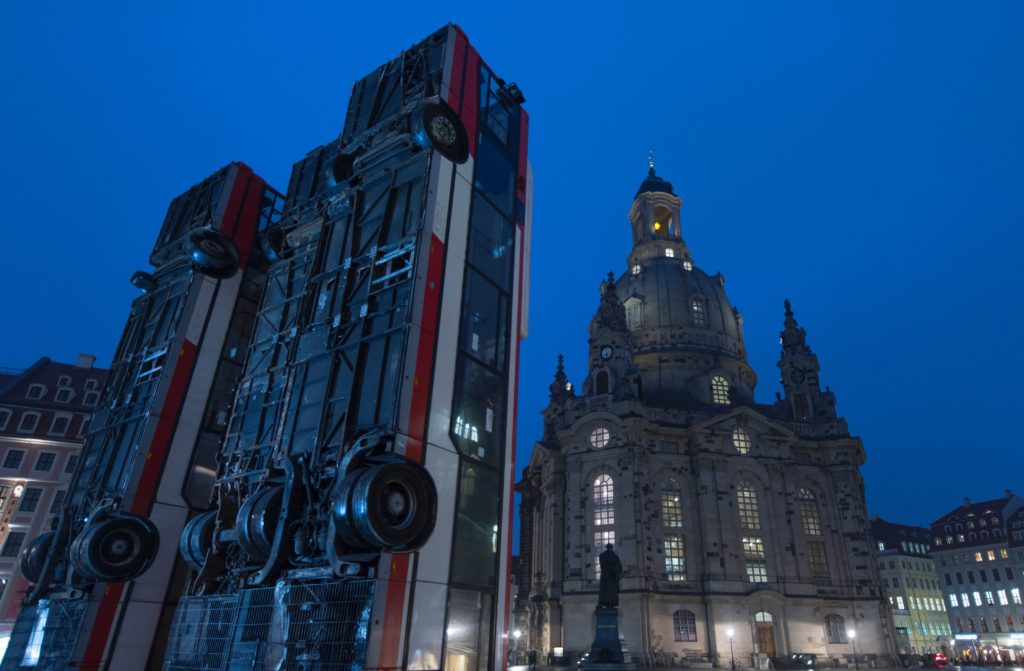Art World
Anti-War Installation in Dresden Targeted by Far-Right Movement
The Dresden museum is considering taking legal action against the right-wing extremists responsible.

The Dresden museum is considering taking legal action against the right-wing extremists responsible.

Hili Perlson

The anti-war installation Monument by artist Manaf Halbouni, which was unveiled in front of the Frauenkirche in Dresden on February 7, continues to be abused as a site of right-wing protest.
Early Monday morning, members of the far-right Identitarian Movement—which is closely monitored by the German intelligence service—mounted a banner with slogans and a flag around the artwork’s three upturned buses, the German press agency DPA reports. The group then posted images of the installation to their Facebook page.
The Kunsthaus Dresden, which commissioned and organized the installation, called the incident “pathetic.”
“I find it disgraceful that there are people who are not able to create their own platforms, and instead use a work of art for their messages,” said the director of the Kunsthaus, Christiane Mennicke-Schwarz.
The Syrian-German artist Halbouni told artnet News via email from his galeriest Katharina Maria Raab, “I think it’s pitiful that this group uses these three buses to boost their profile.”
City workers removed the banner and flag, which was then confiscated by the Dresden police. The police also collected evidence on site and are looking into the possibility of launching a criminal investigation. The Kunsthaus Dresden, meanwhile, is considering taking legal action against the right-wing group.
The sculpture is inspired by a barricade of buses erected in Aleppo to protect civilians. It was erected to mark the anniversary of the Allied aerial firebombing of Dresden during World War II, which killed some 25,000 people in February 1945.
According to the artist, it is meant to symbolize “peace, freedom and humanity,” and to function as “a modern Statue of Liberty.”
At the unveiling on February 7, protesters belonging to Germany’s anti-Islamic group PEGIDA, reportedly heckled the work crying “shame! shame!”
In addition, Germany’s right-wing populist party Alternative für Deutschland (AfD) released a statement calling the artwork an “abuse of artistic freedom” that amounts to nothing more than “scrap metal” and meant to “snub the citizens of Dresden.”
The Kunsthaus Dresden said that the piece creates “a connection between the people of the Middle East and Europe and our shared destinies” and alludes to “the suffering and unspeakable losses as well as the hope for reconstruction and peace.”